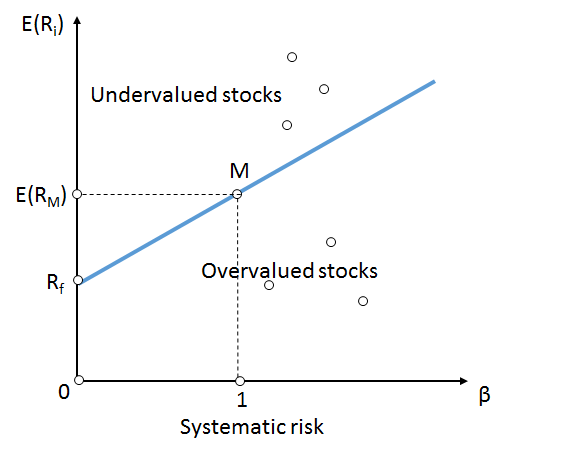What is Market Risk Premium
Market risk premium is the difference between the expected return on a market portfolio generally represented by a proxy such as S&P500 and the risk-free rate generally represented by the short term treasury rate.
In formula wise, it is represented by:
E(R)m – Rf
where E(R)m represents expected return of the market stock and Rf represented the risk free rate
The market risk premium is equal to the slope of the security market line which is the graphical represented of CAPM (capital asset pricing model). CAPM is used to calculate the required rate of return of a stock based on beta which is the equity risk of the stock relative to the market.
In formula wise, CAPM is represented by:
R = Rf + [E(R)m – Rf] * b
where R is the required rate of return of the stock and b is the beta. Note that there is a difference between actual and required rate of return. The difference can tell us if the stock is underpriced (hence you should buy) or overpriced (hence you should sell).
In graphical wise, SML is represented by:

Market Risk Premium & Stock Market
In applying the concept, read up on how understanding the market risk premium can help you understand the stock market.
If you have issues understanding this, contact us to find out how you can learn from our lessons.
You can also read more about other finance topics here
